You’re ready to shift your business focus from sales to revenue, but where do you start?
This transition isn’t always easy. However, by understanding the key differences and challenges, implementing strategic changes, and effectively monitoring progress, you’ll be well on your way.
Let’s dive into how you can successfully transform your organization into a revenue-driven powerhouse.
Table of Contents
ToggleKey Takeaways
- Sales-driven approach focuses on short-term goals and selling products at any cost, while revenue-driven approach prioritizes long-term profitability and sustainability.
- Success in sales-driven approach is measured by the number of units sold, whereas revenue-driven approach considers profit margin per product sold and customer retention rates.
- The shift from a sales-driven to a revenue-driven approach requires adjustments in organizational culture, compensation plans, and key performance indicators (KPIs).
- Implementing strategies for a successful transition involves communicating the necessity and benefits of the change, establishing measurable objectives, providing training resources, and focusing on fundamentally altering corporate culture and mindset.
Understanding the Difference Between Sales-Driven and Revenue-Driven Approaches
It’s essential to grasp the contrast between a sales-driven and revenue-driven approach to effectively transition your organization.
The former emphasizes selling products, often at any cost, with a narrow focus on short-term goals. It’s about quantity over quality, where success is measured by the number of units sold.
In contrast, a revenue-driven approach prioritizes long-term profitability and sustainability. Here, it’s not just about how many products you sell, but also about the profit margin per product sold and customer retention rates. It’s a more holistic view that considers the entire customer lifecycle.
Understanding these differences will help you make strategic decisions in your transition process. You’re moving away from chasing every possible sale towards focusing on those customers who are likely to provide higher profits over time. You’ll start seeing your clients as relationships instead of transactions.
Remember that this shift might involve changing your team structure or incentives – maybe even rethinking some of your products or services if they don’t contribute enough to long-term profitability. But once you’ve made these changes, you’ll be well-positioned for sustainable growth rather than just temporary sales spikes.
Key Factors That Influence the Shift From Sales to Revenue Focus
Understanding the vital aspects that affect a company’s shift from focusing on transactions to concentrating on earnings is crucial for successful business transformation. It’s not just about changing your sales strategy; it’s about reorienting your entire operational perspective.
Firstly, you’ve got to consider your organizational culture. If your team is used to prioritizing sales volume over profitability, shifting their mindset could pose a challenge. Continuous training and communication are key here.
Secondly, you need to review your compensation plans. If they’re centered around transactional sales targets rather than revenue growth, it’d be hard for employees to switch focus. Adjust these incentives in alignment with the new direction.
Finally, evaluate and adjust your company’s Key Performance Indicators (KPIs). Rather than simply measuring units sold or deals closed, pivot towards indicators like customer lifetime value or profit margins which directly tie into revenue generation.
Remember – transitioning isn’t an overnight process. But as you steer through these influential factors with strategic planning and consistent effort, you’ll see a marked difference in how your organization operates and thrives in the long run.
Implementing Strategies for a Successful Transition
You’ll need to meticulously implement strategic plans for a successful shift in your company’s focus, ensuring everyone is on board with the new direction. This isn’t just about changing the metrics you track or the goals you set; it’s about fundamentally altering your corporate culture and mindset.
Start by communicating clearly and consistently about why this change is necessary and how it will benefit every team member. You’re not just chasing numbers; you’re building long-term stability and growth. Make sure they understand that revenue-driven does not mean profit at any cost but rather sustainable financial health.
Next, establish measurable objectives tied to this new focus. That might be increasing recurring revenue streams, reducing customer churn, or boosting overall customer lifetime value. Whatever markers of success you choose, make them SMART: Specific, Measurable, Achievable, Relevant and Time-bound.
Finally, provide the training resources your staff will need to succeed in this new paradigm. Whether it’s learning new sales techniques focused on retention rather than acquisition or understanding how their job contributes to overall revenue generation—ensure they have the tools they need.
Your transition won’t be easy, but with careful planning and execution it could propel your company into its next phase of growth.
Challenges Encountered During the Transition and How to Overcome Them
Despite your best efforts, you’re bound to encounter hurdles during this shift in company focus, and it’s how you overcome them that truly matters.
Resistance to change is a common obstacle. Employees may cling to familiar routines rather than embracing new responsibilities or methods. To navigate this challenge, ensure transparency and communication about the transition’s benefits.
Another challenge lies in adjusting your metrics of success. Moving from a sales-driven approach means shifting from measuring short-term gains like closed deals, to long-term goals such as customer retention rates and lifetime value. You might grapple with defining these new parameters at first but remember that patience is key here.
Lastly, implementing new tools and technology can also be daunting. The right CRM or revenue management software can streamline processes but also requires time for training and adaptation.
Overcoming these challenges isn’t easy; it calls for resilience, adaptability, and clear vision from leadership. But by maintaining open dialogue with your team, redefining your metric system gradually, and ensuring proper software training, you’ll not only tackle these obstacles head-on but emerge stronger on the other side of the transition.
Monitoring and Evaluating the Success of Your Revenue-Driven Model
It’s crucial to keep a keen eye on the performance of your new business model. Evaluate its success through key indicators such as customer retention rates and lifetime value. You need to understand whether your shift to a revenue-driven approach is bearing fruit or if adjustments are in order.
Analyze customer behavior patterns. Are they making repeat purchases? Do they seem more satisfied with your services? High retention suggests you’re doing something right. Monitor the average spend per customer too – an increasing trend could indicate improved value perception.
Don’t disregard feedback either. It’s a gold mine for insights. Being revenue-driven means focusing more on what clients truly want and less on pushing sales – are customers noticing this change?
Finally, compare financial metrics pre- and post-transition. If there’s a significant upswing in profit margins, you’re likely on the right track.
Remember, it takes time for changes to take full effect. Don’t be disheartened by initial hiccups; use them as learning opportunities instead.



